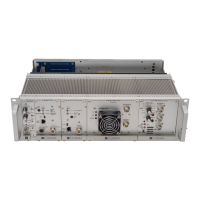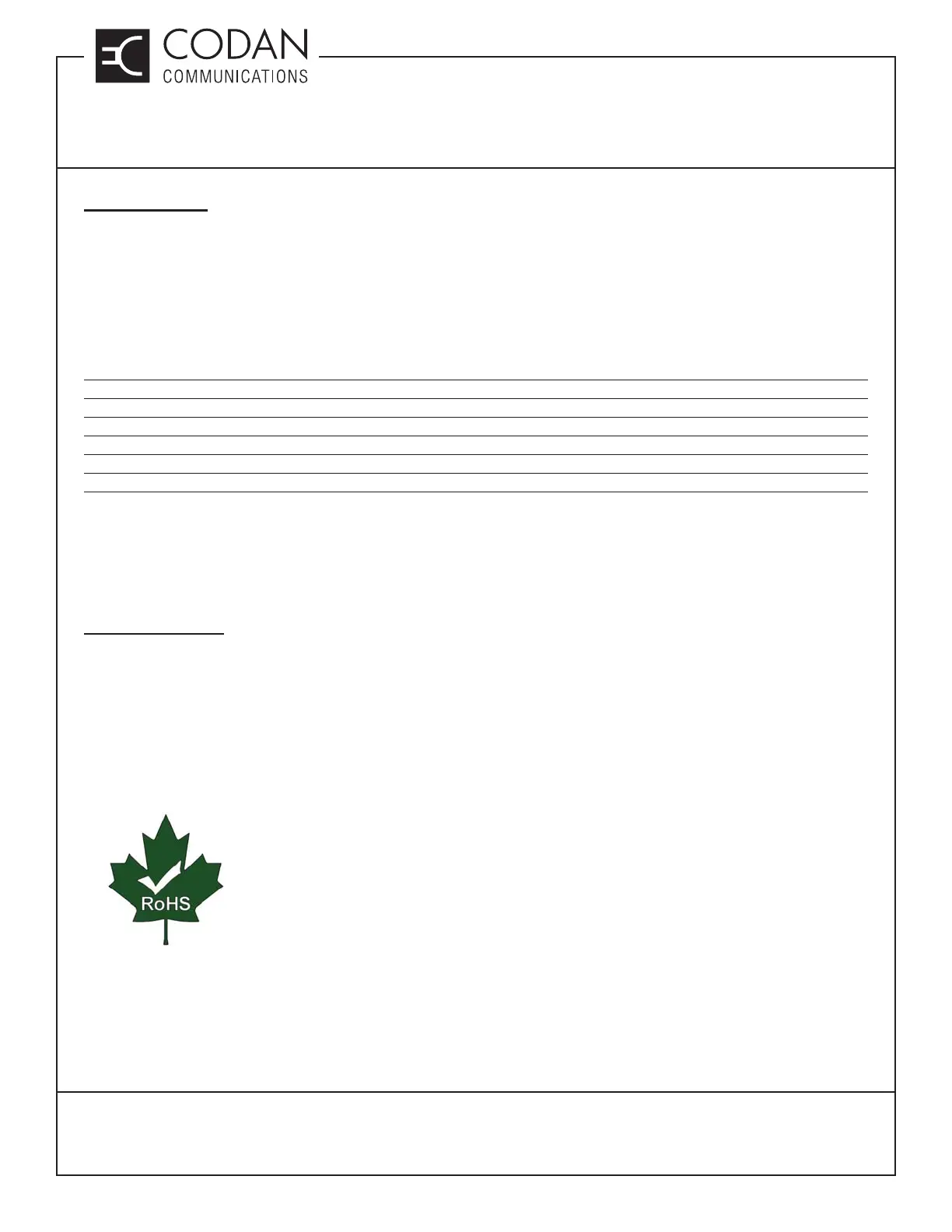EN140 Restriction of Hazardous Substances (RoHS)
EXPLANATORY NOTES
Page 1 of 2
LMRSALES@CODANCOMMS.COM
CODANCOMMS.COMEXPLANATORY NOTE:
EN140, REV 1-1-0, © Mar 2013
CANADA/US +1 250 382 8268 | TOLL FREE +1 800 664 4066
RoHS Directive
In order to expand sales into the European market, Codan Communications is currently implementing the RoHS
directive for some key products. The Restriction of Hazardous Substances (RoHS) directive—also known by its
legislation number, Directive 2002/95/EC—is an important piece of European Legislation that must be complied
with in order to sell electronic equipment in the European Union (EU).
The RoHS directive took eff ect in EU member states in July of 2006 and restricts use of the following substances to
a specifi c maximum concentration value :
LEAD (0.1%) – Solder, brass alloys, and in electronic component lead plating
MERCURY (0.1%) – found in sensitive switches, thermostats
CADMIUM (0.01%) – used in some plastics, PVC, as well as some pigments
HEXAVALENT CHROMIUM (0.1%) – most commonly found in metal fi nishes
POLYBROMINATED BIPHENYLS or PBB (0.1%) – fl ame retardants
POLYBROMINATED DIPHENYL ETHERS or PBDE (0.1%) – fl ame retardants
These maximum concentration values are determined by a percentage of the weight of a “homogenous material”.
Homogenous material is defi ned by the directive as “a material that cannot be mechanically disjointed into diff erent
material.” This includes anything that is of a uniform composition like a metallic alloy, plastics, resins and coatings.
Every mechanically separate item inside a product must comply separately to the RoHS directive .
Codan and RoHS
All products, accessories and other items sold by Codan in the European market (including product, storage racks,
containers, hardware and labels) will comply with the RoHS directive.
Codan is in the process of moving the manufacturing of all printed circuit boards (PCBs) to lead-free solder and
ensuring that components of select products are certifi ed as RoHS compliant. Codan PCBs that are RoHS compliant
have board numbers beginning with 6- and will also bear the following RoHS logo if room on the board is available.
As future products are released, they will clearly show the RoHS logo to indicate that
the entire unit is 100% RoHS compliant.
The primary diff erence between the solder connections created with lead-free solder and tin-lead solder is the visual
appearance of the solder. Lead-free solder is more likely to have a grainy or dull appearance as opposed to tin-lead
solder which has a generally smooth appearance.

